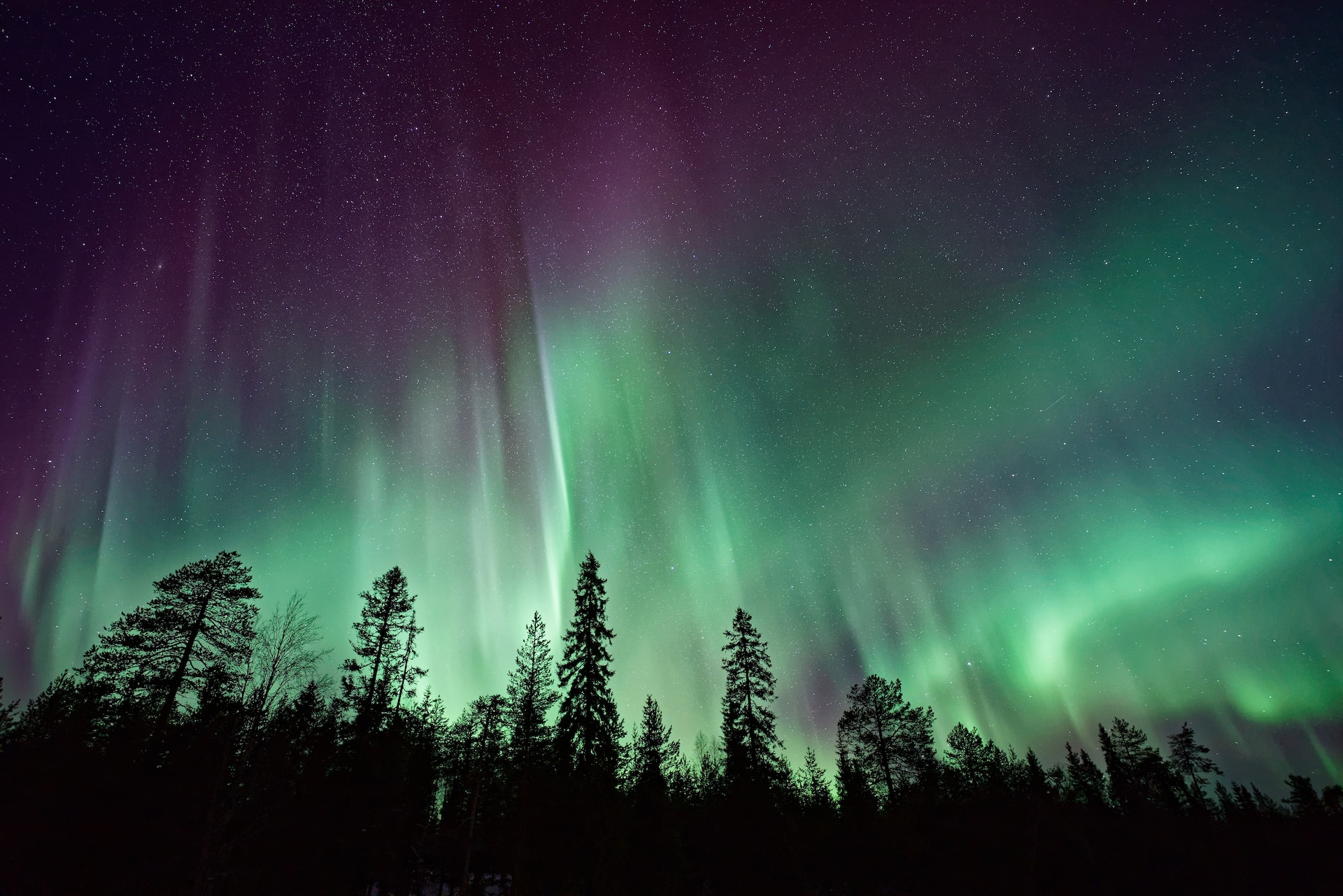The Northern Lights get their name from the fact that they are usually only visible in the Northern Hemisphere, although they can occasionally be seen from Scotland, Northern Ireland, and other parts of the UK.
The best time to see the Northern Lights is during the winter months (September to April) when the nights are longest and the skies are darkest. This is also the time of year when solar activity is at its highest, which means that there is a better chance of seeing the lights.
What Causes the Northern Lights?
The Northern Lights are caused by charged particles from the sun interacting with the Earth’s magnetic field and atmosphere. These particles are released by the sun during what is known as a solar flare or coronal mass ejection.
When the charged particles from the sun collide with the Earth’s magnetic field, they create a stream of particles that flow along the magnetic field lines. These particles are then concentrated near the Earth’s poles, where they collide with the atoms and molecules in the atmosphere.
When this happens, the atoms and molecules are excited and release energy in the form of photons, which causes the beautiful and colorful light displays that we know as the Northern Lights.
Where is the Best Place to See the Northern Lights?
The Northern Lights are most commonly visible in the countries that lie within the “Aurora Oval,” which includes Norway, Sweden, Finland, Iceland, Greenland, Canada, and Alaska. These countries are known for their dark skies, lack of light pollution, and proximity to the Earth’s poles, all of which make it easier to see the aurora.
Within these countries, there are certain locations that are particularly good for viewing the Northern Lights. In Norway, for example, the Lofoten Islands and the town of Tromsø are both popular spots for tourists to see the lights. In Iceland, the Thingvellir National Park and the Jökulsárlón Glacier Lagoon are both great places to see the lights.
Additionally, you can also consider looking for reliable tour services that can also provide accommodations, and local insights. You can book a northern lights holidays with these services to increase your aurora watching adventure. It’s also worth noting that certain months are better than others for viewing the Northern Lights. September, October, March, and April are the best months to see the aurora, as they tend to have the most stable weather and the highest levels of solar activity.
How to Photograph the Northern Lights
Photographing the Northern Lights can be tricky, but with the right equipment and a little bit of luck, it’s possible to capture some truly stunning images.
The most important thing you’ll need is a tripod, as you’ll need to keep your camera steady for long exposures. You’ll also want a camera that allows you to shoot in manual mode, as this will give you more control over your settings.
When it comes to camera settings, there are a few things to keep in mind. You’ll want to use a wide-angle lens (ideally 14-20mm), shoot in RAW format, and use a low ISO (ISO 800 or lower). You’ll also need to use a long exposure time (usually between 15 and 30 seconds) and a wide aperture (f/2.8 or lower).
Finally, it’s important to remember that the Northern Lights are a natural phenomenon, so there’s no guarantee that you’ll see them, even if you travel to the best locations during the best months. But if you do see them, it’s an experience that you’ll never forget.
